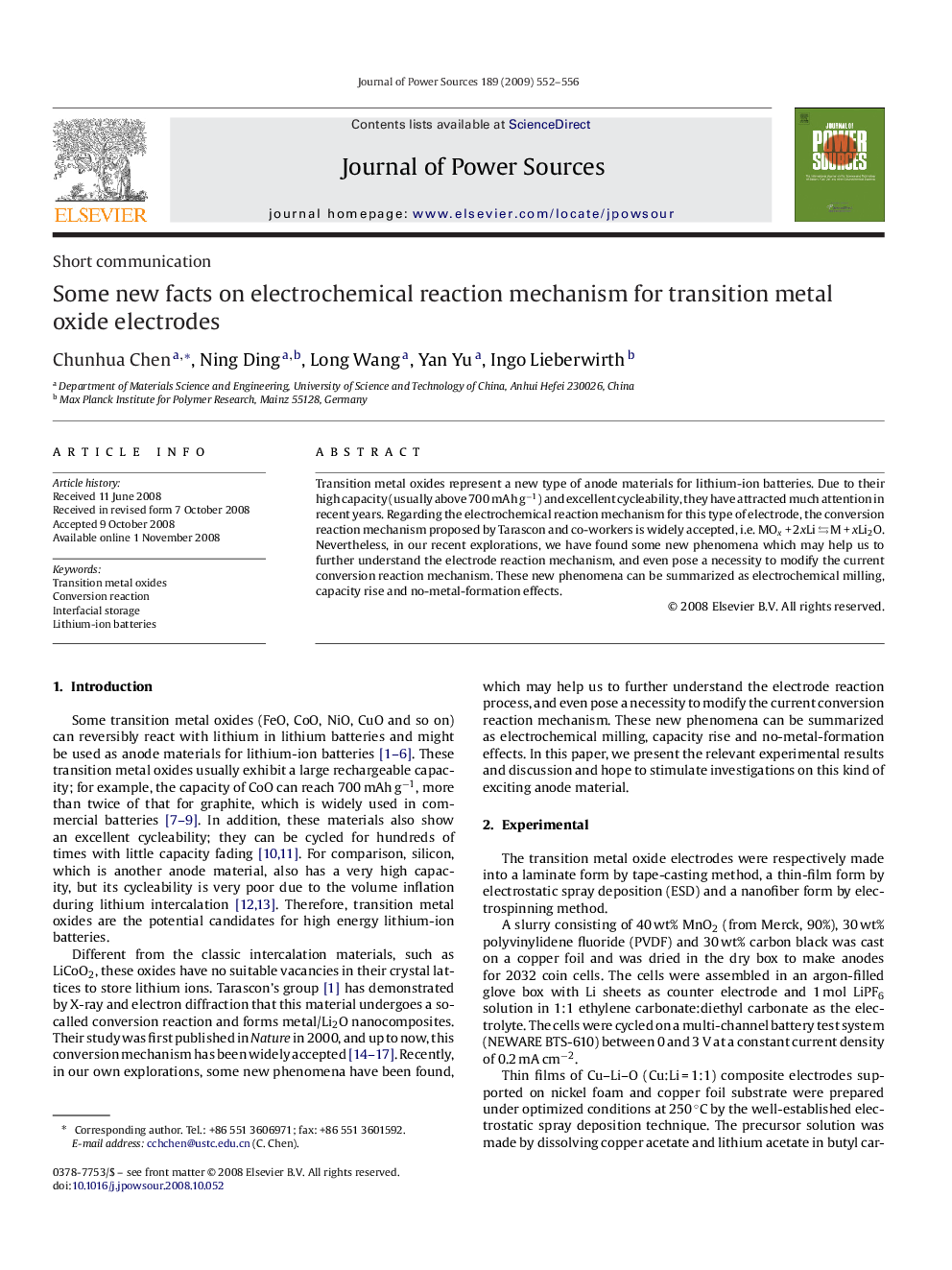| Article ID | Journal | Published Year | Pages | File Type |
|---|---|---|---|---|
| 1291234 | Journal of Power Sources | 2009 | 5 Pages |
Transition metal oxides represent a new type of anode materials for lithium-ion batteries. Due to their high capacity (usually above 700 mAh g−1) and excellent cycleability, they have attracted much attention in recent years. Regarding the electrochemical reaction mechanism for this type of electrode, the conversion reaction mechanism proposed by Tarascon and co-workers is widely accepted, i.e. MOx + 2xLi ⇆ M + xLi2O. Nevertheless, in our recent explorations, we have found some new phenomena which may help us to further understand the electrode reaction mechanism, and even pose a necessity to modify the current conversion reaction mechanism. These new phenomena can be summarized as electrochemical milling, capacity rise and no-metal-formation effects.
